Introduction
The clock is ticking. On June 30, 2025, Microsoft will remove the Outbound Marketing module from Dynamics 365 Customer Insights—Journeys.
However, the migration process is not always smooth, despite Real-time Marketing being more modern, smarter, and event-driven. So, it is high time to learn in detail how to make the migration process as smooth as possible.
For an all-encompassing understanding of the topic, it is useful to read the following articles on this topic in the UDS Blog:
7 Key Steps for Migrating from Outbound to Real-time Marketing in Dynamics 365
How to Transition Segments from Outbound to Real-time Marketing in Dynamics 365
How to Transition Emails from Outbound to Real-time Marketing in Dynamics 365
Once you are familiar with the basics, this article’s simple and clear tips will help you cope with the bumps along the way.
The Benefits of Using Real-time Marketing
Real-time Marketing comes with huge long-term wins:
- Real-time responsiveness to customer behavior
- Unlimited segmentation that updates instantly
- Simplified consent management with dedicated preference centers
- Generative AI to help write content, build segments, and even design journeys
- Massive scale improvements: up to 100 million contacts and 300 million interactions per month
- Better data models and integration with Customer Insights
Real-time is the future if you want to build modern, dynamic, personalized marketing at a scale.
Fixing the Most Frustrating Parts of the Migration
Here are ten issues most companies face during the migration, along with what you can do to resolve them fast:
1. "Why are we even switching? Outbound works fine."
The advice: Educate your team. Show your employees how real-time unlocks instant personalization, AI-powered features, and better performance.
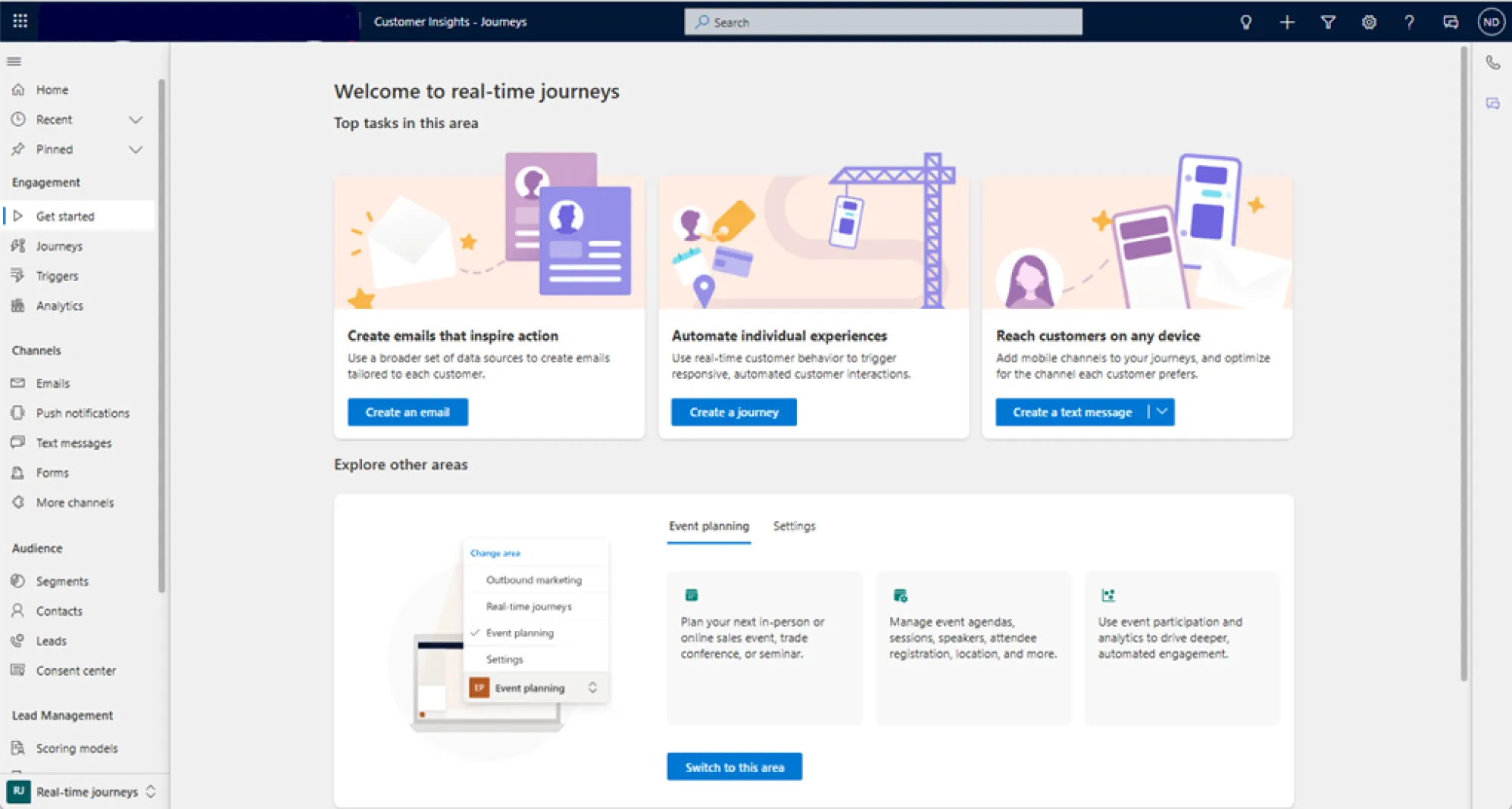
2. "I’ve imported an email, but the formatting is off."
The advice: The import tool preserves layout and content blocks, but always double-check personalization tokens, styling, and compliance settings. Then, preview and test before using it in a journey.
! Note. Find more tips here: https://uds.systems/blog/email-transition-from-outbound-to-real-time-marketing/
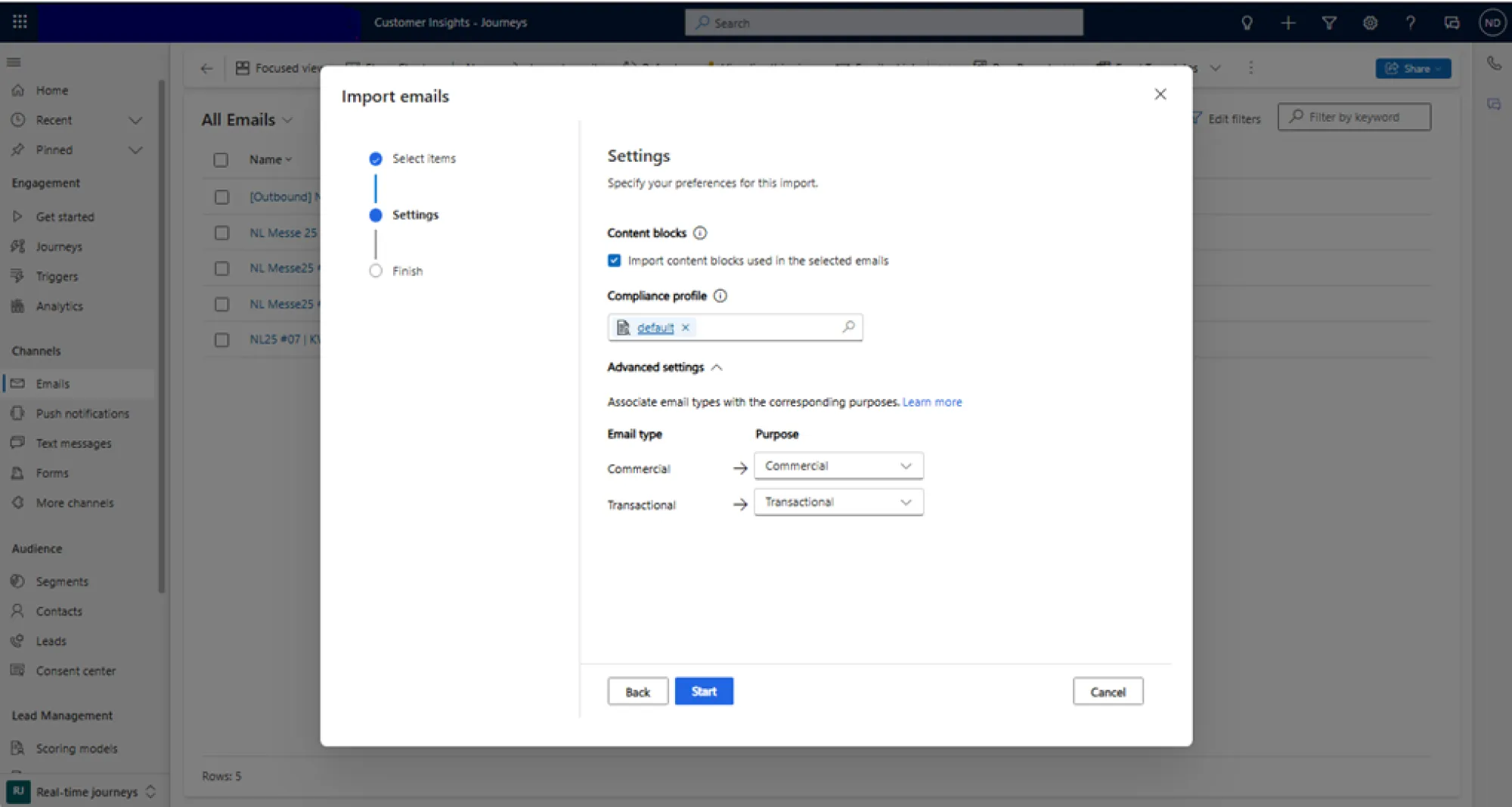
3. "The segments don’t behave like they used to."
The advice: Real-time segments update dynamically. You will need to recreate static logic using behavior or attribute filters. Use Copilot’s natural language queries to simplify this process.
! Note. Find more tips here: https://uds.systems/blog/how-to-transition-segments-from-outbound-to-real-time-marketing-in-dynamics-365/
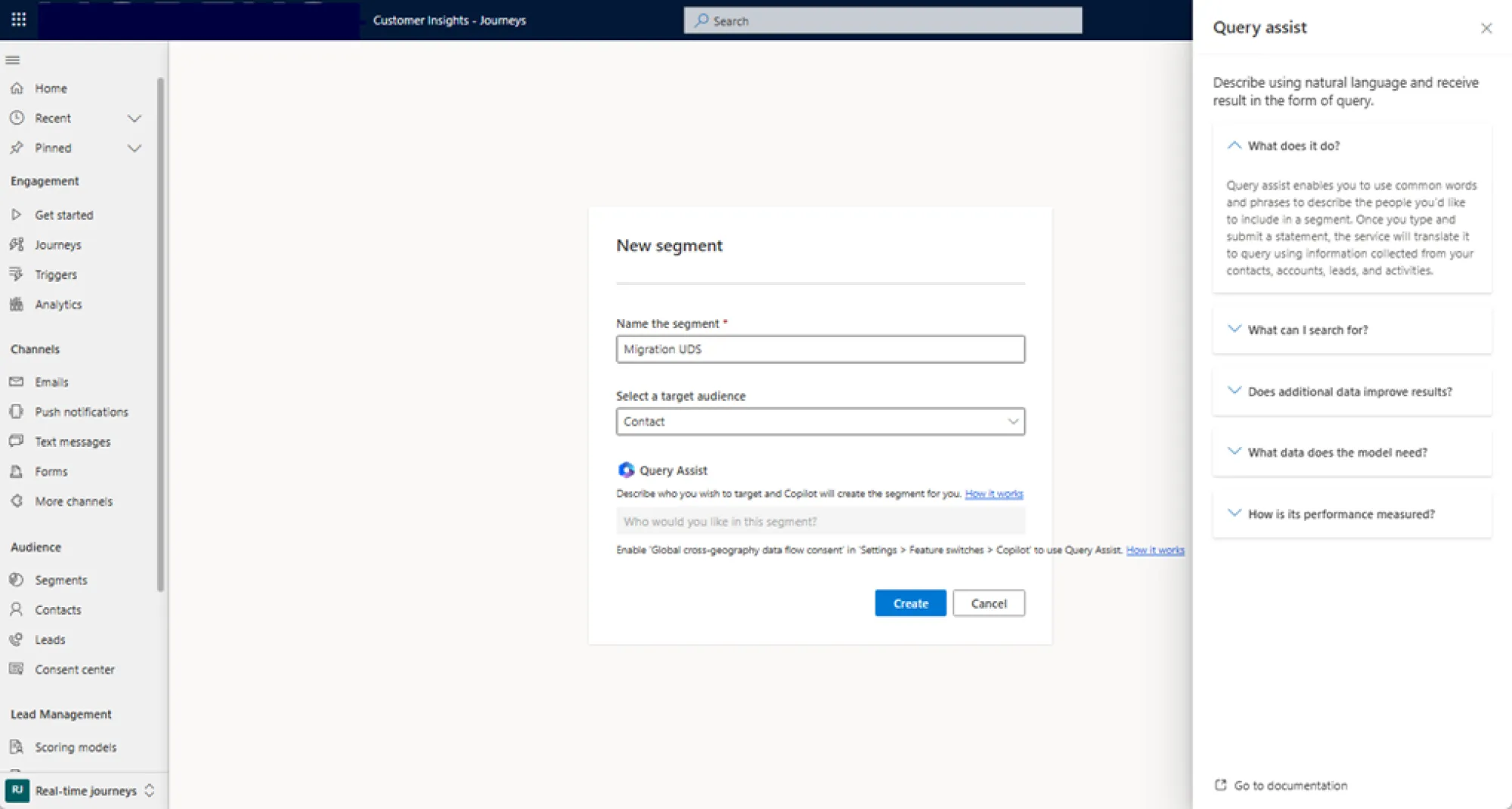
4. "I don't see my segments after migration."
The advice: The segments migrated via the Segment Migration Solution appear in the draft state and are labeled "Migrated". You will need to publish them to use in journeys manually.
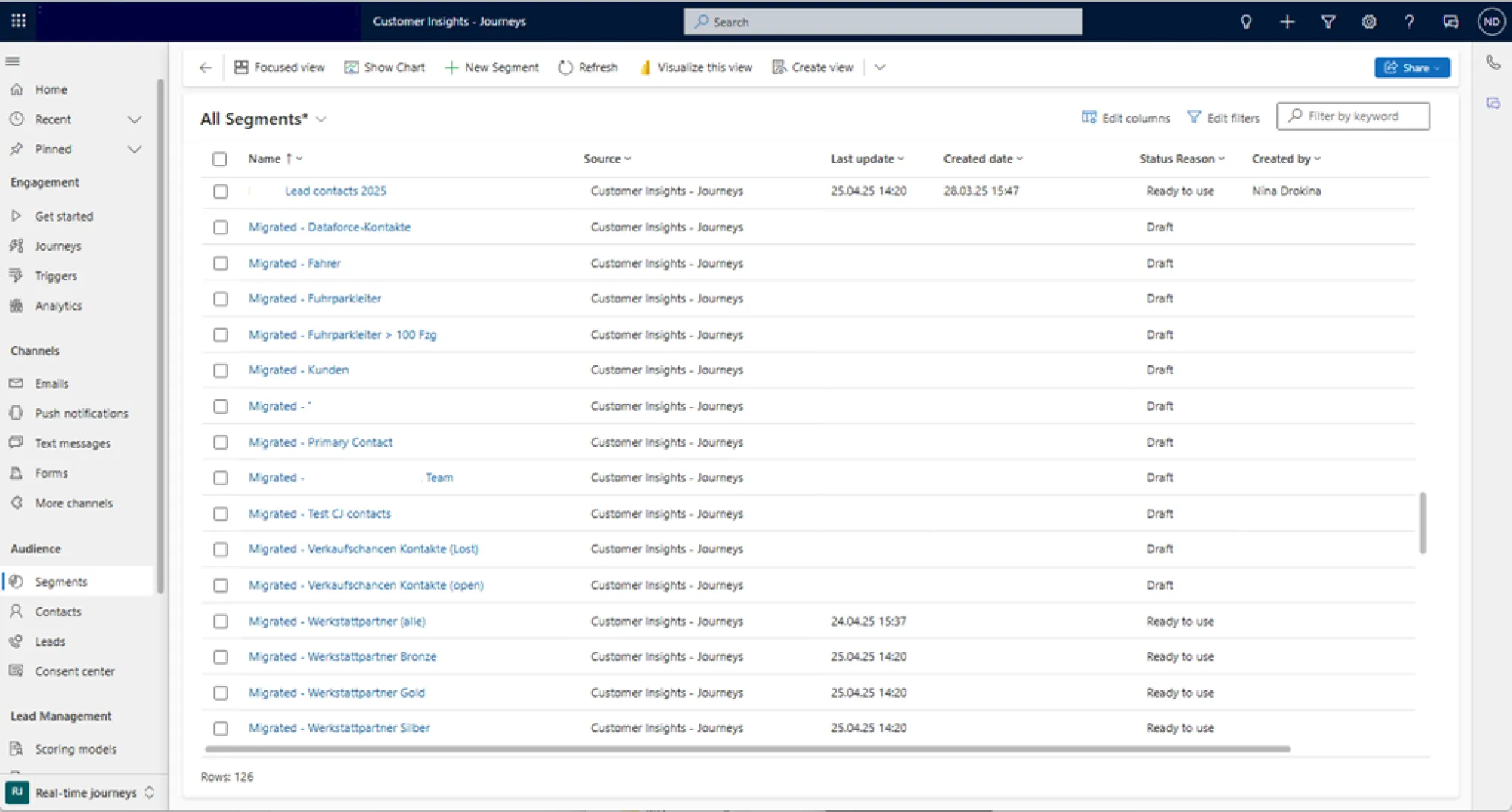
5. “Some segments have failed migration, and I don’t know why.”
The advice: The pre-check tool will tell you why. The common reasons include static segments over 100 members, nested logic, or behavioral interactions. You can rebuild those manually using the real-time segment builder.
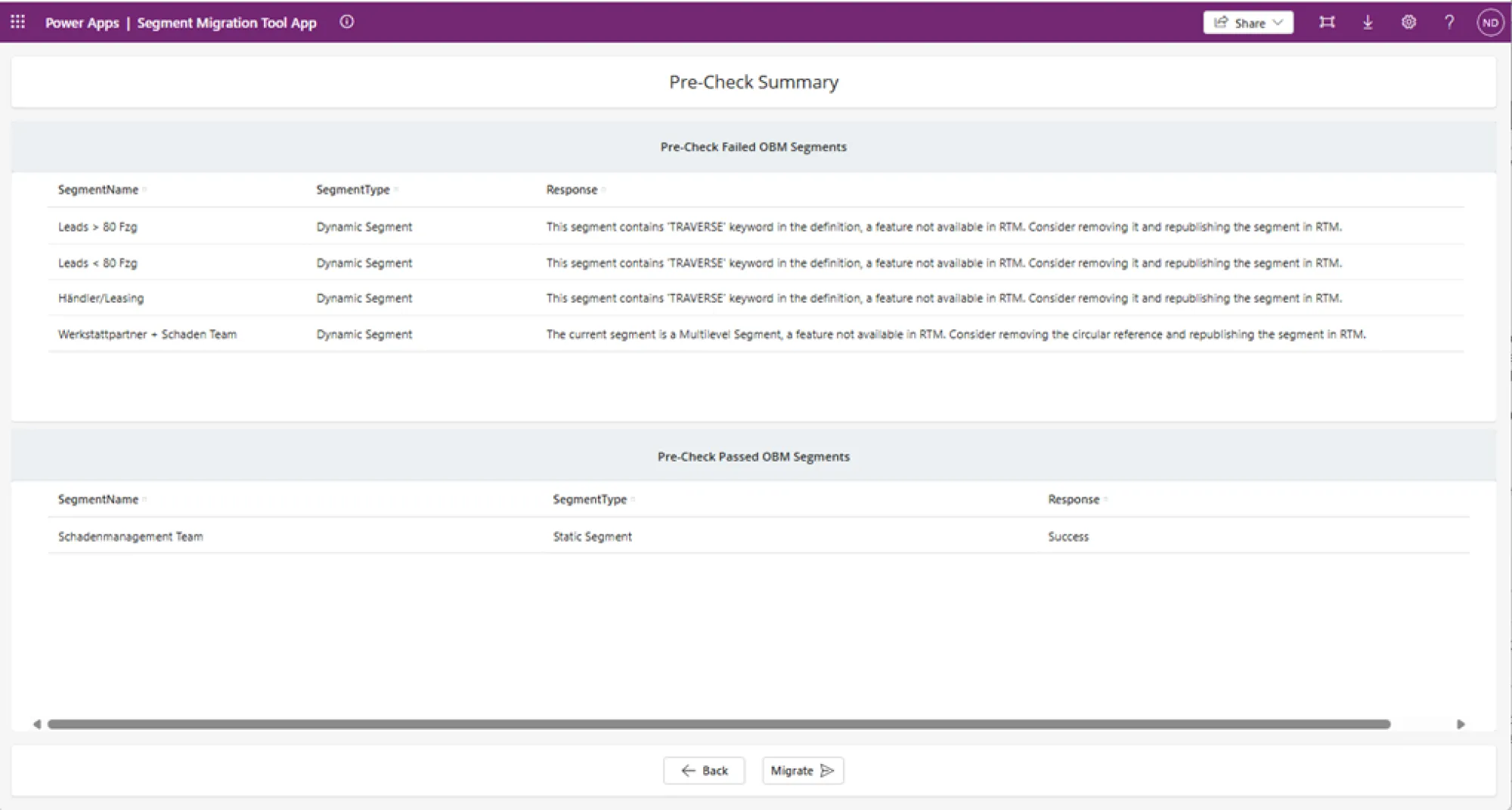
6. “Why can’t I just copy and paste the HTML code of my outbound email or form into Real-time Marketing?”
The advice: Real-Time Marketing uses a structured, block-based editor to ensure responsiveness, accessibility, data binding, and compliance with consent and tracking settings. Simply pasting raw HTML from outbound assets can break styling, disable personalization, or bypass critical compliance elements. To preserve the layout and functionality, use the built-in Import tool for emails and rebuild forms using the real-time form designer.
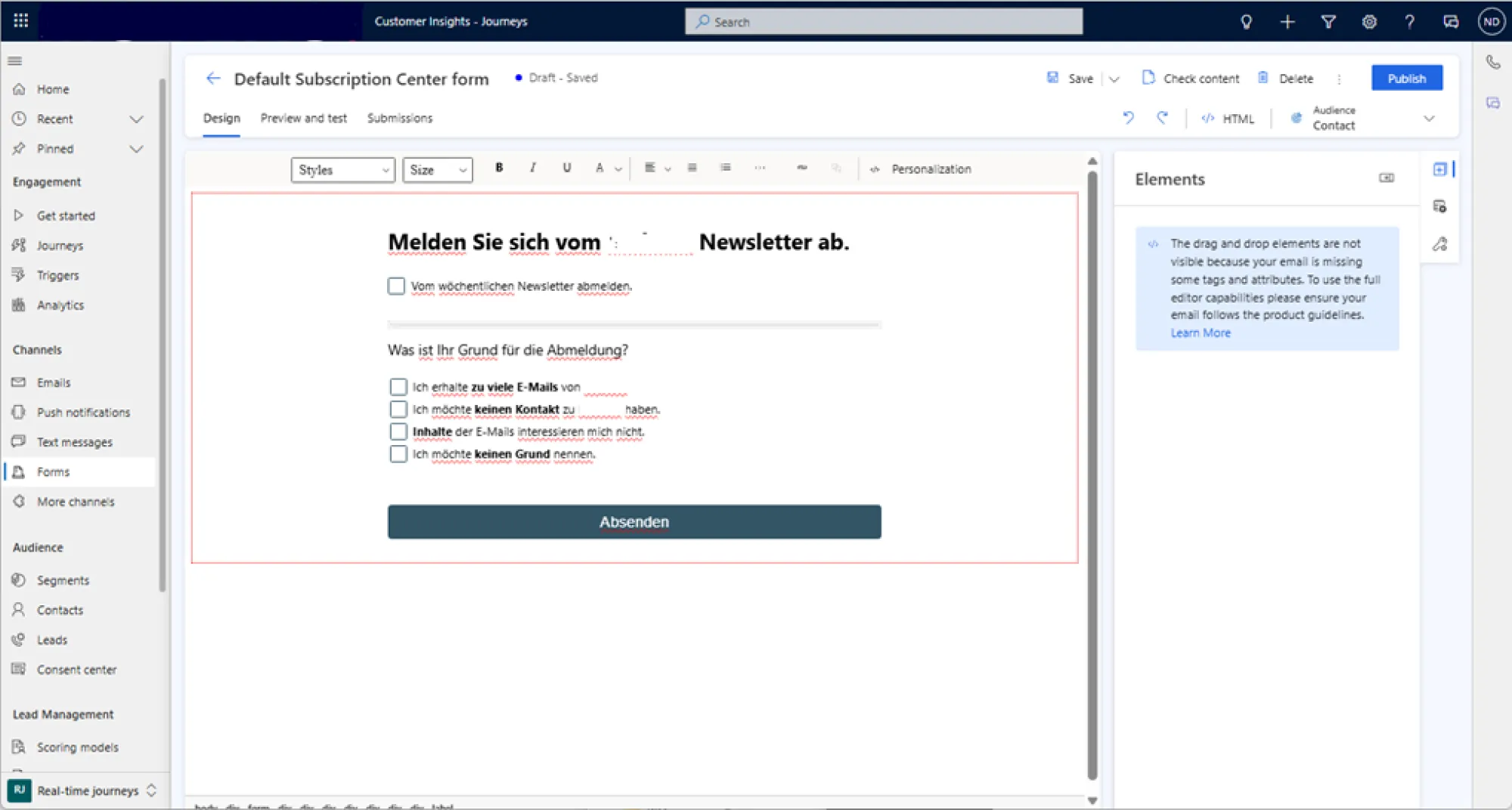
7. “The consent is inconsistent between modules.”
The advice: Use the new consent center and contact point consent records. Outbound-style checkboxes do not carry over. Make sure all forms, emails, and preference pages are connected to real-time compliance.
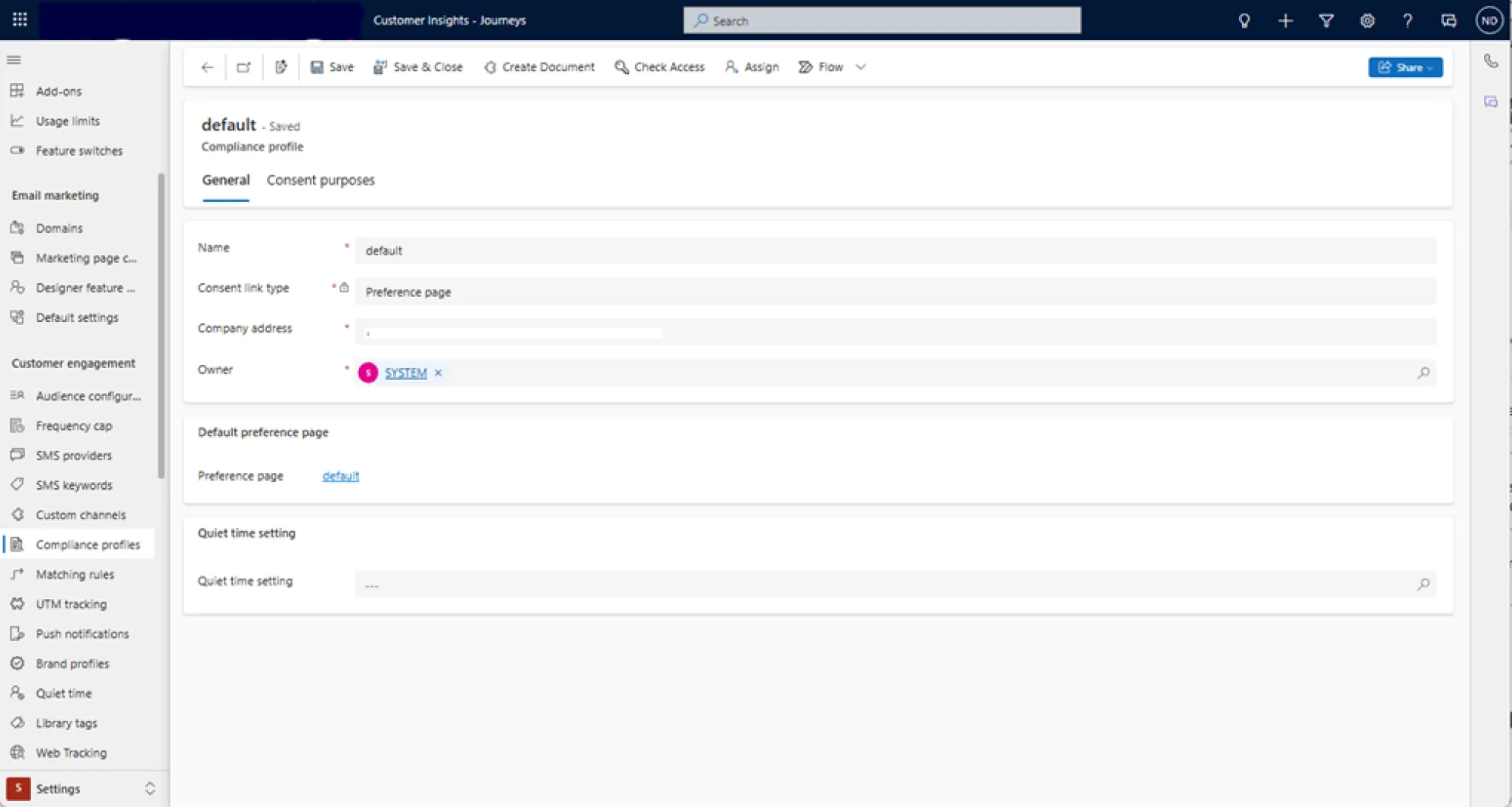
8. “Reporting is broken after migration.”
The advice: Outbound reports and Power BI dashboards won’t work with real-time data out of the box. You will need to build new dashboards or use the combined analytics interface.
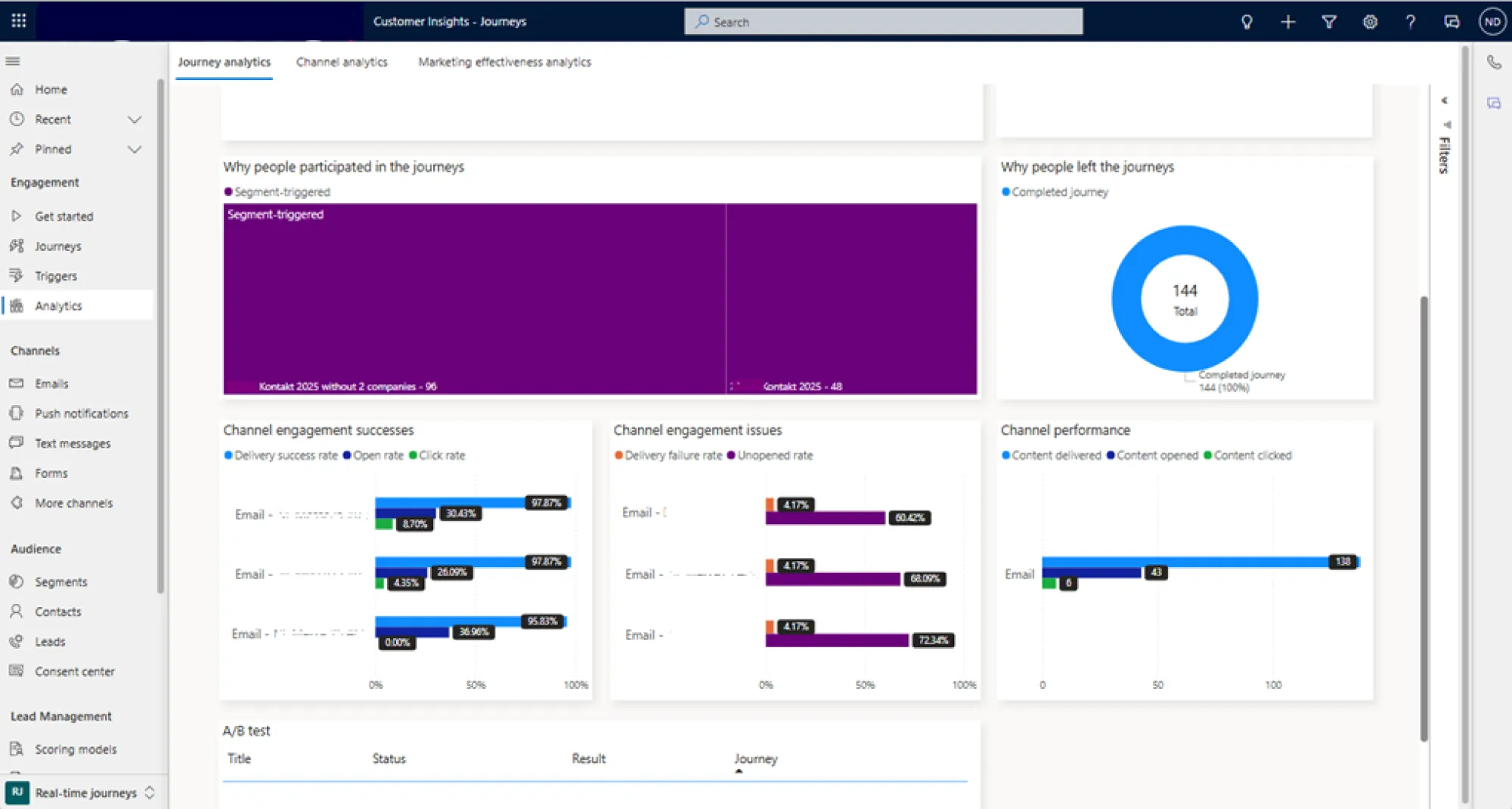
9. “The team keeps building new content in outbound.”
The advice: Once you have migrated the core assets, go to Settings > Versions and hide the outbound marketing. This action prevents the accidental creation of legacy emails, segments, and journeys.
! Note. If your team updates the outbound segment, re-run the migration tool to overwrite the previous version without affecting your quota.
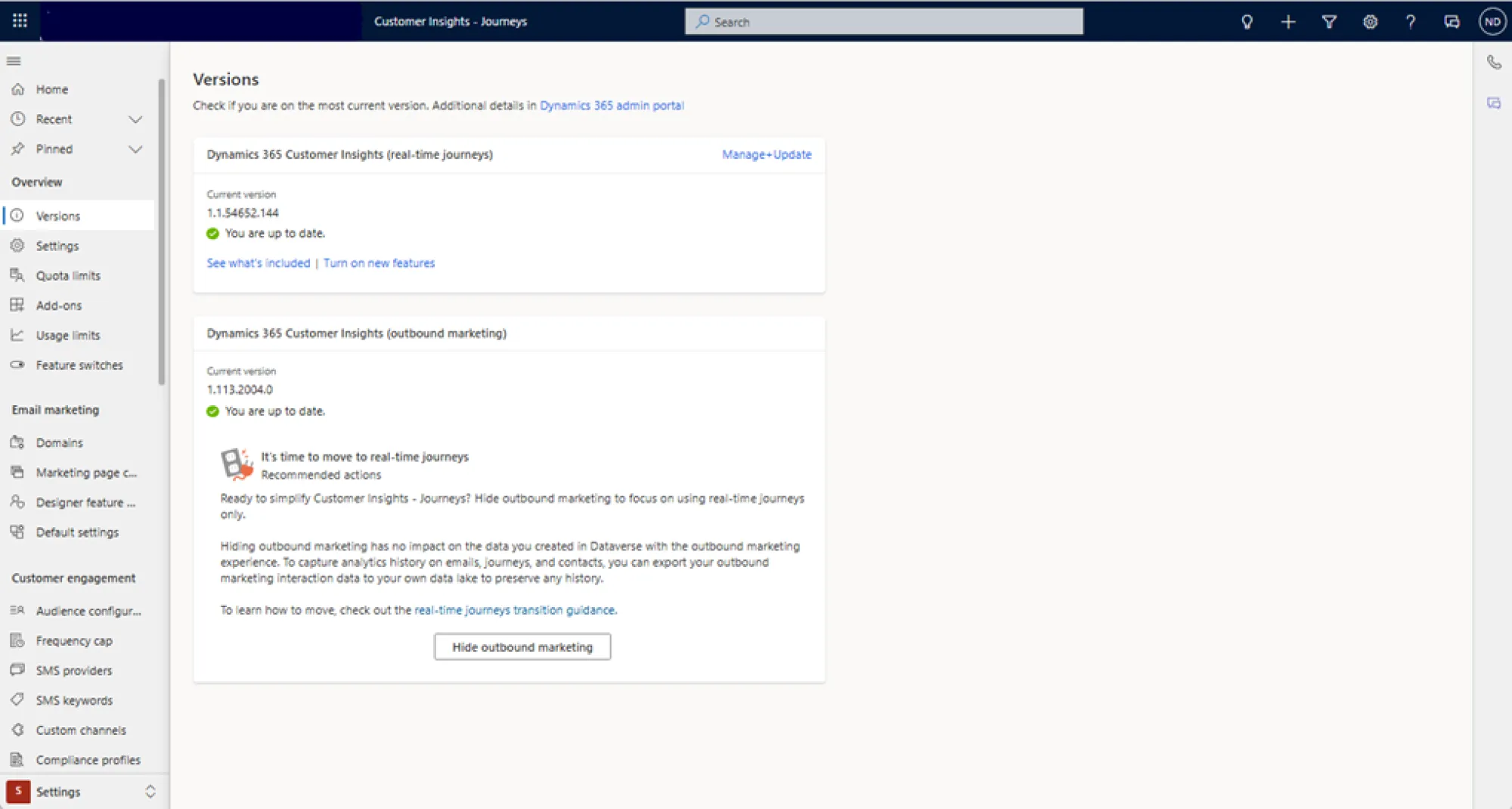
10. “We just don’t have time for this.”
The advice: Start small. Use real-time journeys for new campaigns. Let outbound journeys finish naturally. Do not wait until June 2025. You will avoid the deadline stress and get your team comfortable sooner.
Some Important Notes to Keep in Mind
The Segment Migration Solution has limitations:
- The tool has a hard limit of 2,000 segments per environment.
- Re-migrating an existing segment does not count again. It means to assist, not replace manual work. On the other hand, Copilot is your best friend when rebuilding segments and journeys from scratch.
- Not all outbound logic translates 1-to-1. It will take some time to redesign your campaigns for real-time logic.
- Some analytics and custom scripts from outbound will no longer function once the module is removed.
! Note. Always test your journeys in draft mode using test profiles before publishing.
Conclusion
Migrating to Real-time Marketing in Dynamics 365 is a big step, but it is the right one. Waiting until June 30, 2025, is risky. Moreover, real-time tools, capabilities, and future-readiness far outweigh the temporary hurdles.
Start now. Prioritize. Test often. Document everything.

